
Highlights of the British Collection: East Oxford Archaeology
Object Biographies : Oxford Truncheon
by Leigh Mellor
Truncheons
In the Manning Collection there are 84 Constable’s truncheons. These are dated from 1740 to just after the First World War (Figure 2), the sizes range from 2.05 to 1.97 m (Figure 3), and their appearance varies from what look to be handmade coshes to professionally turned and painted “standard” truncheons (Figures 4 and 5), recognisable from the truncheons the “bobby on the beat” used to carry before the current baton.
This wide diversity arises from the nature of policing before the introduction of the County police forces in the 1860s. Before this date the peace was kept by “Sworn Constables of the Crown” who were appointed in every parish. This was an unpaid position, with no uniform, and as the warrant card, the current form of identification, was not introduced until 1864, there was a need for some way to identify the person as a bona fide officer of the Crown. Enter the truncheon.
The nature of the position, especially its unpaid side, explains the wide diversity of quality of the truncheons. It would depend on the income of the office holder, and also whether the truncheon in question was used on official occasions. Some of the larger examples in the collection could be classed as “tipstaves”, symbols of power like the Mace in Parliament, purely ceremonial artefacts to be displayed at certain events such as Quarter Sessions, where the splendour of the staff would reflect upon the local community.
As servants of the Crown, the most common form of decoration is the coat of arms of the reigning monarch, giving a convenient indication of the approximate date of the truncheon in question. They often refer to the parish where the constable kept the peace, as well as sometimes mentioning a date.
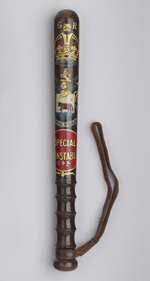
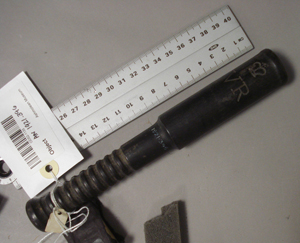
Figure 2-3: Special constables truncheon, City of Oxford (AN1949.347). Smallest trucheon in the Ashmolean's collection, from Burford (AN1921.396).
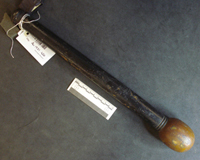
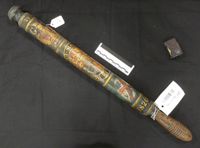
Figure 4-5: Practical constables staff from Kidlington (AN1921.420). Decorated truncheon from Langford, 1826 (AN1921.423).
The changing face of policing
As can be seen from the timeline, this period was a time of immense change. Europe was convulsed by the French Revolution then by Napoleon and the other European nation’s response, while England had to come to terms with the “loss” of America. While England had a relatively stable, though evolving, system of governance, deep and abiding alterations to very fabric of society were being wrought by the Industrial Revolution and the equally wide ranging changes to the agricultural practices being introduced.
The effect on the policing of the country was profound. It had been based on the general premise that a trustworthy local would know his “patch”; a reasonable assumption given a stable population. However, as the period covered progressed, the population was on the move; urbanisation arrived with a vengeance - the days of everyone in an area knowing everyone else (and their parents and grandparents) were vanishing never to return. The return of the soldiers after the Napoleonic Wars caused a general panic amongst the middle and propertied classes and gave rise to an increasing number of restrictive laws, which in turn altered the way the police had to operate.
The response was an increasing professionalisation of the police; the introduction of county police forces, the warrant card, uniforms and standard equipment – the last spelling the death of the marvellously diverse range of truncheons which had existed before.
The Truncheon in Question
The specific truncheon I looked at, Ashmolean acquisition number 1921.375 was in the possession of Abner Savage who lived in St Clements, and was an Inspector of the University Police from 1831 to 1868. The University Police were the “Night Watch” while the City Police took over responsibility during the day. There is a reference to him in the collection of University Police Items in the Bodleian Library: - "Six alphabetical registers, written mainly by Abner Savage, police inspector, 1831-68, of persons reported to or detained by the University Police. The last four volumes also contain records of policemen on duty and miscellaneous notes on robberies, the state of the weather Oxford elections, &c."1
He also appears in the Oxfordshire Quarter Sessions2 where he appears in “Recognizances”, where people are bound over to appear in court at a later date. It is his name occurring here that would account for his name being misquoted in the Ashmolean’s Acquisition book where the truncheon is said to belong to an “Abner Green”. In the records held at the Oxfordshire History Centre both of the recognizances quoted refer to people surnamed Green, which has, I think, given rise to the confusion.
The dating of the truncheon is slightly odd in that it has on it G.R. III, whose reign ended in 1820, 11 years before Abner Savage was promoted to Inspector. Had he kept the truncheon he used when he was a constable? Unfortunately, the records of constable’s attendance have not been analysed – at a cursory examination the attendance varies from day-to-day. There seems to be very little continuity over an extended period.
In 1868, the City and University police were amalgamated3 and Inspector Abner Savage disappears from the records.
Notes
1. Bodleian Library MSS. Top. Oxon b. e. 248-53)
2. Oxfordxhire County Council, Oxfordshire History Centre Ref: QS1840/3/L2/19
3. Victoria County Histories, A History of the County of Oxford: Volume 4: The City of Oxford, Police Service.
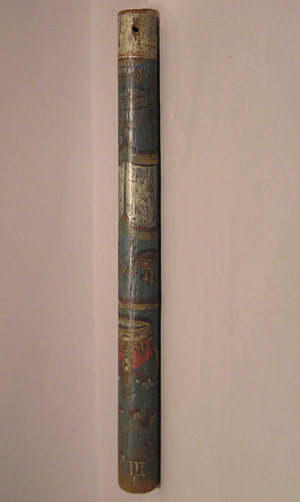
Figure 1. Oxford University Police Inspector's Truncheon, Ashmolean Museum AN1921.375
Timeine
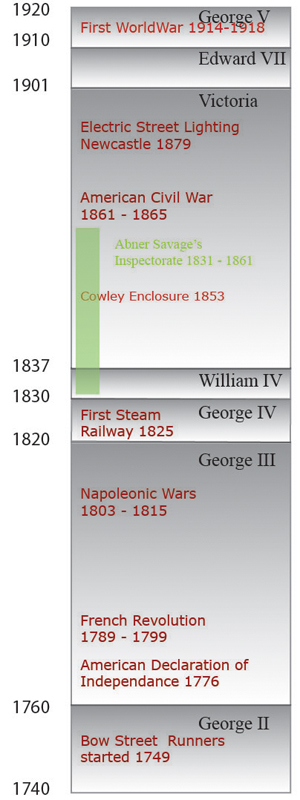
Further Information
For a background on police truncheons, the website Truncheons and Tipstaves gives a good overview: -
I have found A History of the British Police, by Richard Cowley, The History Press, to give a valuable overview of the history of policing in general.
Find out more about:
- Oxfordshire's Historic Archives
- British Collections Online - searchable database of the collection
July 2014
